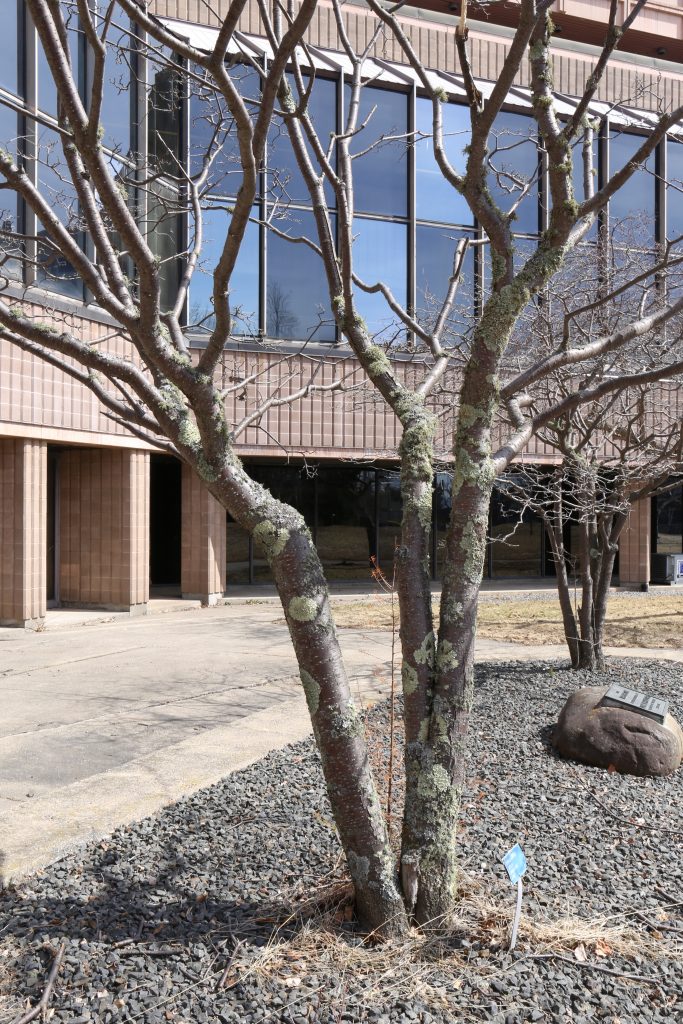
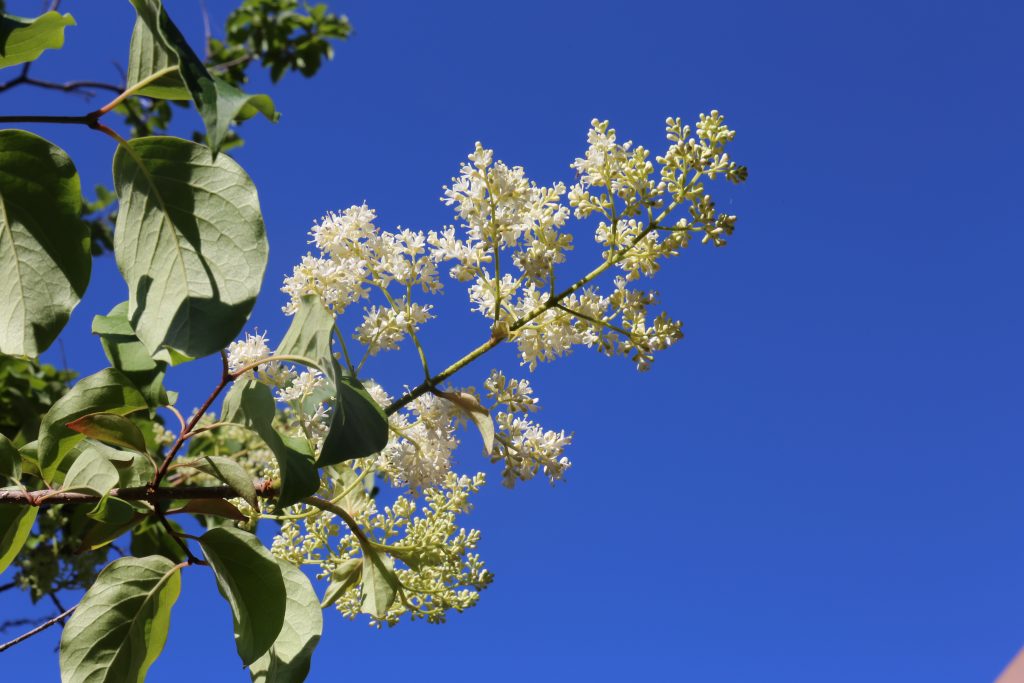
Trees: Japanese lilacs (Syringa amurensis) (Fig 3-1) are obviously an introduced decorative tree, with nice clusters (racemes Fig 3-1a) of white flowers in spring. Stressed (often non-native) trees, seem to be a good substrate for lichen growth. Is it possible that rather than just being opportunistic colonizers as the canopy is opening up due to leaf or needle loss, the fungal component of the lichen is actually feeding on, and contributing to the demise of the host tree? This is not a commonly held view, but I have seen no evidence to the contrary.
Lichens: The most obvious are the now familiar disks (Fig 3-2)
of Flavoparmelia caperata (Fig. 3-3) and the yet to be discussed shrubby (fruticose) lichens. These will be dealt with at Stop 4. The lilacs harbour a few foliose, but much less conspicuous, lichens. With some searching on the surface of the bark (Fig 3-4) and the old round knot (Fig 3-5) you may find the brownish-green patches of “camouflage” lichen Melanelixia probably fuliginosa (shiny camouflage lichen) (Fig. 3-6).
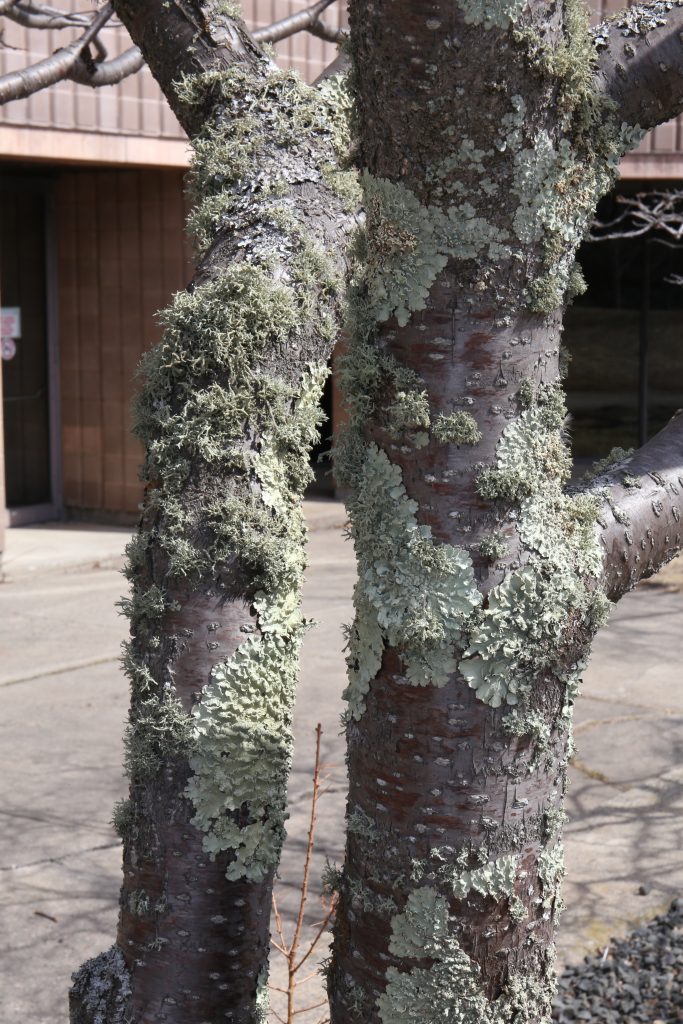
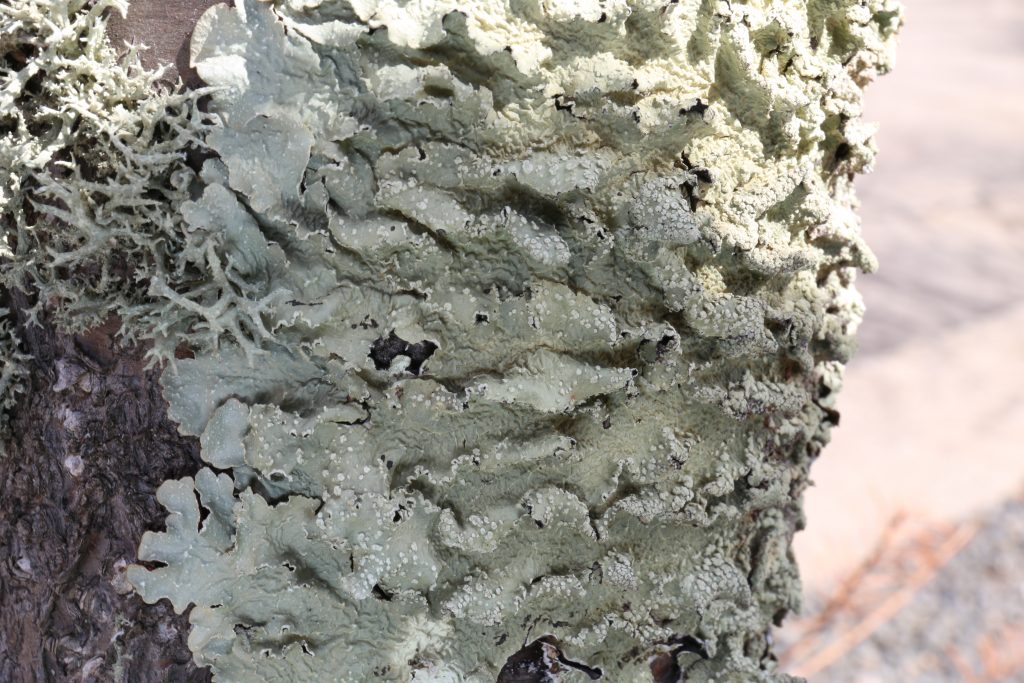
Fig 3-3 Flavoparmelia caperata
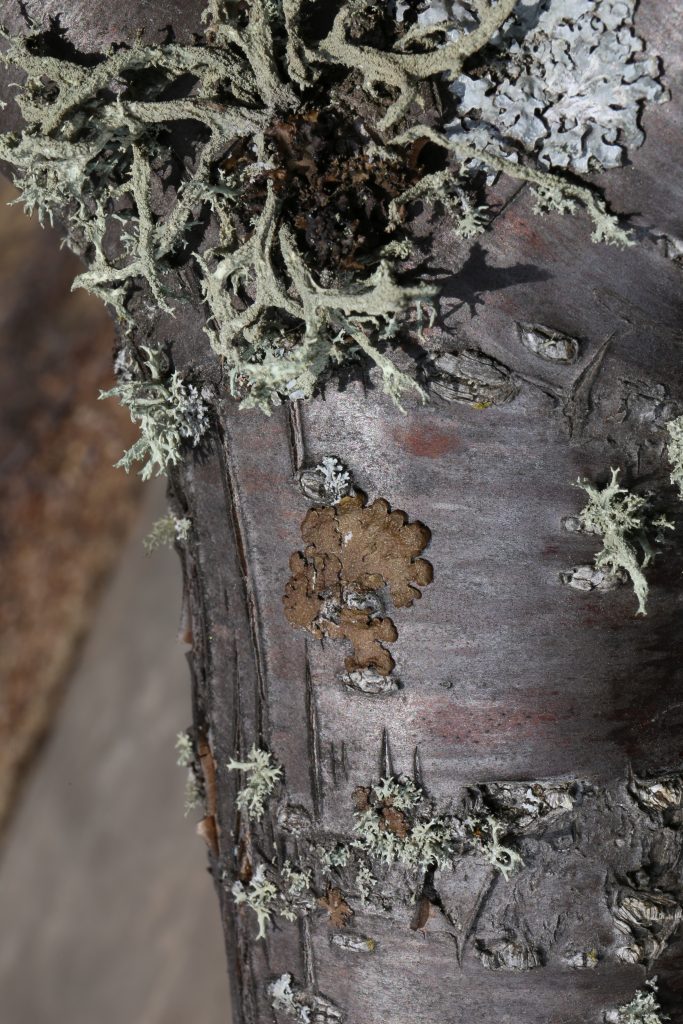
Fig 3-4 Melanelixia on bark
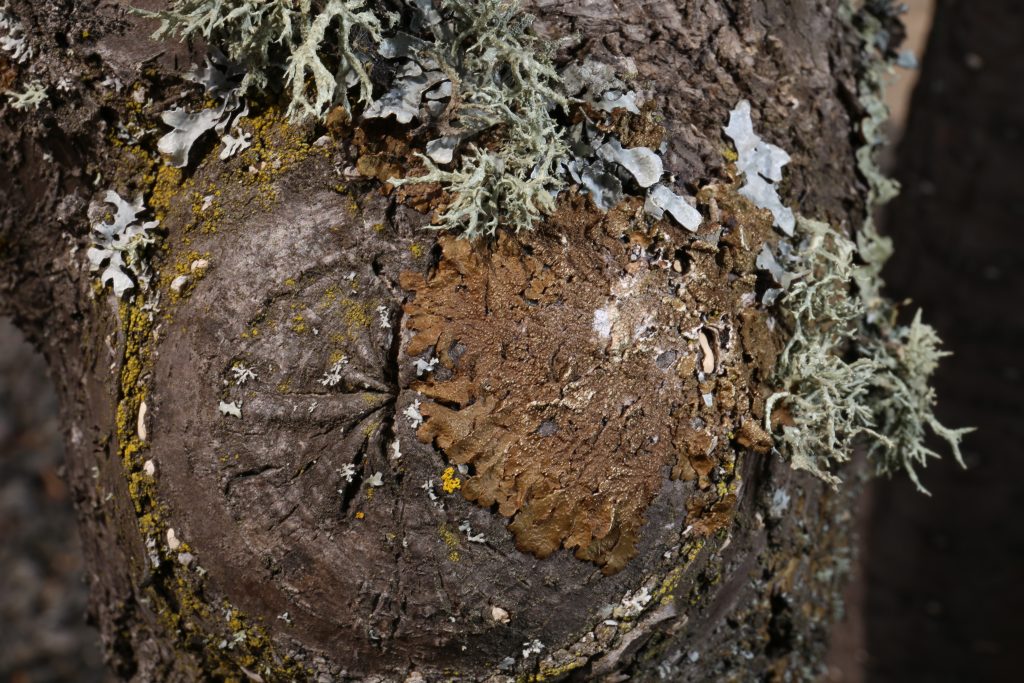
Fig 3-5 Melanelixia on tree knot
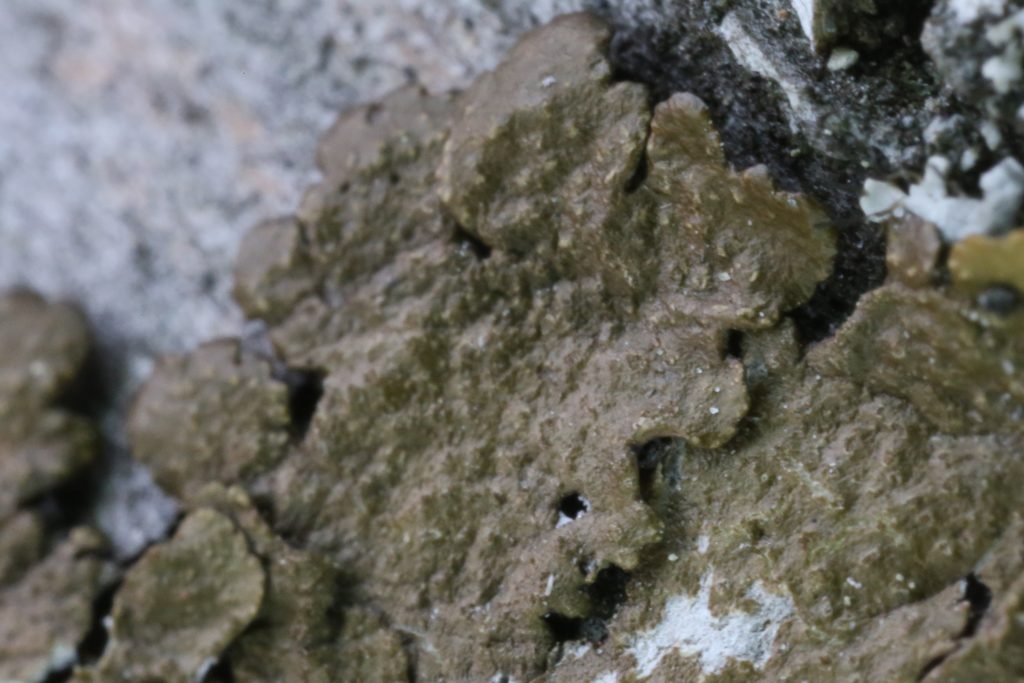
The above photographs show the already familiar Flavoparmelia caperata (Fig. 3-3) which lacks pseudocyphellae, as well as new distinct dark brown/green Melanelixia (Figs. 3-4 to 6). The more conspicuous shrubby (fruticose) lichens will be introduced at Stop 4.